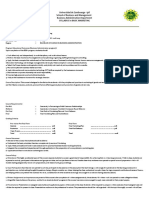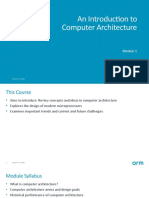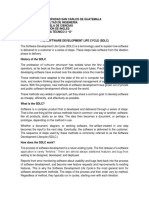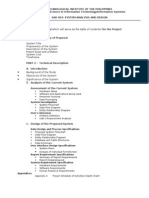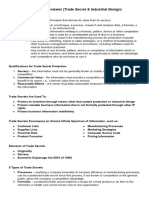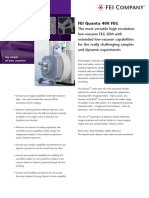0% found this document useful (0 votes)
189 views29 pagesSystem Integration and Architecture Report - Group 2
This document discusses system requirements and design. It defines system requirements as specifications that outline what a software system must achieve. Gathering requirements involves stakeholder involvement, interviews, use cases and documenting requirements. System design bridges requirements and implementation, with key aspects like architectural design, database design and user interface design. Effective system design can improve performance, user experience and reduce maintenance costs. Examples of system design for inventory management, online banking and e-commerce are provided.
Uploaded by
jelyn noblefrancaCopyright
© © All Rights Reserved
We take content rights seriously. If you suspect this is your content, claim it here.
Available Formats
Download as PPTX, PDF, TXT or read online on Scribd
0% found this document useful (0 votes)
189 views29 pagesSystem Integration and Architecture Report - Group 2
This document discusses system requirements and design. It defines system requirements as specifications that outline what a software system must achieve. Gathering requirements involves stakeholder involvement, interviews, use cases and documenting requirements. System design bridges requirements and implementation, with key aspects like architectural design, database design and user interface design. Effective system design can improve performance, user experience and reduce maintenance costs. Examples of system design for inventory management, online banking and e-commerce are provided.
Uploaded by
jelyn noblefrancaCopyright
© © All Rights Reserved
We take content rights seriously. If you suspect this is your content, claim it here.
Available Formats
Download as PPTX, PDF, TXT or read online on Scribd
/ 29







